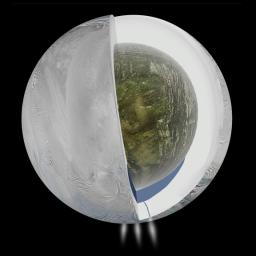Here we go, in order of announcement...
- There was a massive increase in the number of confirmed exoplanets--aka planets that orbit stars other than our own. The 715 new planets found by the Kepler Space Telescope have upped the exoplanet count to almost 1700 known worlds. Many of those come from multi-planet systems, like our own solar system.
- A huge star was found. Really huge. Top ten biggest ever, and number one biggest "yellow" star. Our sun is classified as yellow, but this star is 1300 times the diameter of our's, and is referred to as a "hypergiant". It's also in a binary system, and its companion star is so close that it's basically touching.
- The first moments of the cosmos had extremely rapid expansion. Scientists have found concrete evidence for the Big Bang. Cosmic background radiation has shown "gravitational waves" that left a mark during the intense inflation right at the beginning of the universe. It's a signature that can't be mistaken. This is really big news, guys. Like...really big.
A new dwarf planet may have been discovered. Like Pluto, it's small and icy, and like the wacky Sedna, it has a bizarre orbit that takes it far, far away from the sun. Way farther than Pluto. Almost reaching the Oort cloud. So how is it held in orbit at all? That's a mystery scientists are eager to dig into. Watch for more far-out dwarf planet discoveries in the near future.
Sedna's location, for reference. - Two rings were found around the asteroid Chariklo, making this the first asteroid that we know of to have its own rings! It's likely that these rings were formed from some kind of collision event in the past.
Saturn's moon, Enceladus, has liquid water! Much like Jupiter's moon, Europa, under the icy surface of this world there is a massive ocean. It is warmed by the frictional tidal pull of the huge gas planet it orbits. Cassini--the mission NASA has out by Saturn at the moment--has already shown that water ejections from the planet contain salt and organic molecules. These are the ingredients for life. This ocean has just become one of the top candidates in the solar system for aliens!
Enceladus has an ocean! With geysers! - There's new evidence that an absolutely enormous asteroid may have impacted Earth 3.26 billion years ago. This thing might have been five times the size of the space rock that hit at the end of the Cretaceous. It would've boiled oceans and vaporized rock. Vaporized rock. That rock vapor would've been flung into the atmosphere and rained back down as liquid before freezing back solid on impact. WOW.
- A possible exomoon has been discovered. So far, no moons orbiting exoplanets have been discovered, but it stands to reason that they're out there. Unfortunately for this discovery, it's unclear if the objects in question are a giant gas planet and a big moon, or a very tiny star and an exoplanet. With current technology, there's no way to tell which it is. But it does give the first bit of hope that exomoons are out there.
- And of course, speaking of moons, tonight we have a total lunar eclipse. It will last from approximately 3am (EST) to 5am on April 15th, if you're willing to be up then to watch for it. It's the first of four lunar eclipses we'll be getting between now and Fall of 2015, so if you miss it never fear--you may have more chances, depending on your local weather!

Phew! I think I hit most of the big stuff. Life became busy, and blogging got pushed aside. Hopefully I'll have more time for it this month, but for now I'm glad I at least got to catch up on all this space news. So much happened in such a short stretch of time!

No comments:
Post a Comment